Cisco CCNP SWITCH Spanning Tree Protocol (STP)
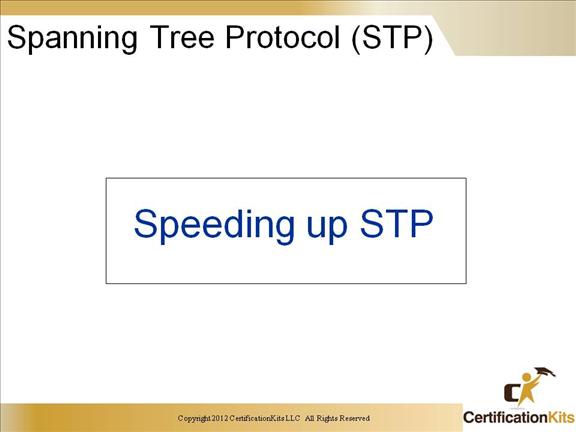
Cisco CCNP SWITCH What Is PortFast?
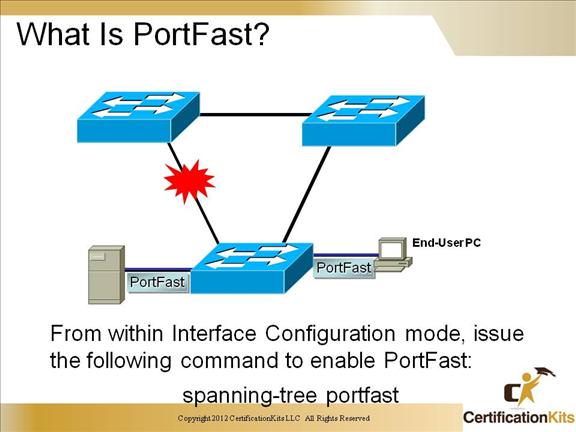
Portfast is used to minimize server or workstation downtime. Portfast is configured on a port to port basis. Be careful to only enable Portfast on ports that are connected directly to end hosts (i.e. servers or PCs), not to other siwtches.
Cisco CCNP SWITCH Enabling and Verifying PortFast
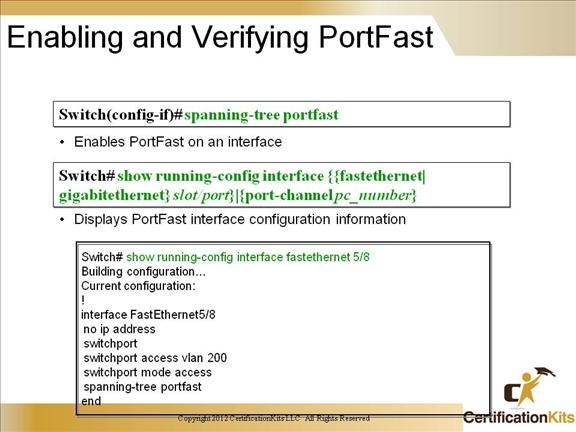
Note: You should use PortFast to connect a single end station or a switch port to a switch port. If you enable PortFast on a port that is connected to another Layer 2 device, such as a switch, you might create network loops.
Cisco CCNP SWITCH Protecting STP w/Portfast Enabled
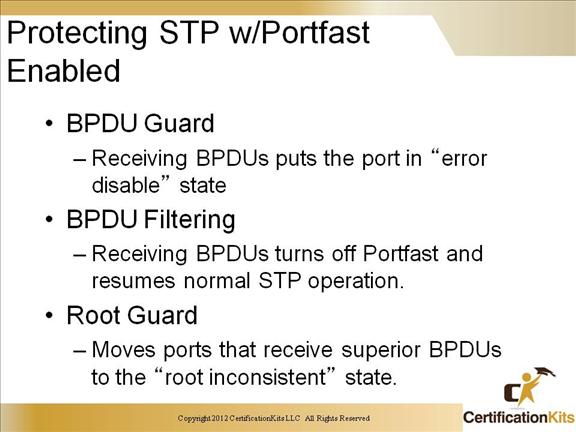
Cisco CCNP SWITCH Enabling and Verifying BPDU Guard
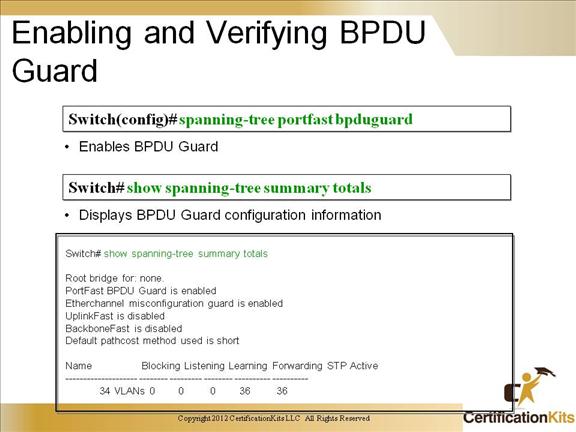
If a port with bpduguard enabled receives a BPDU, the port with be placed in errordisable state.
Cisco CCNP SWITCH What Is UplinkFast?
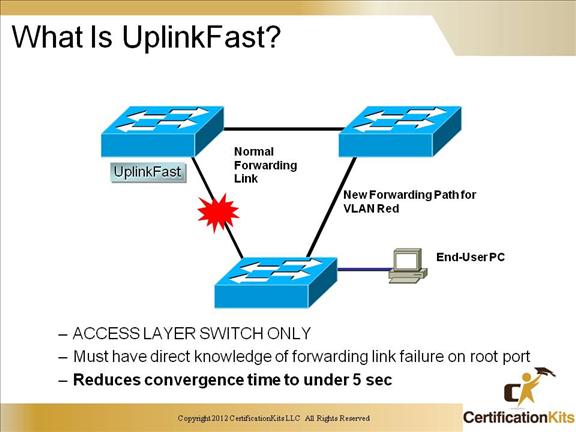
UplinkFast is a means for speeding up network convergence. It minimizes network downtime from about 50sec. to somewhere less than 5sec. Uplink fast is configured on a switch to switch basis and should only be configured on Access Layer Switches.
Cisco CCNP SWITCH BackboneFast Overview
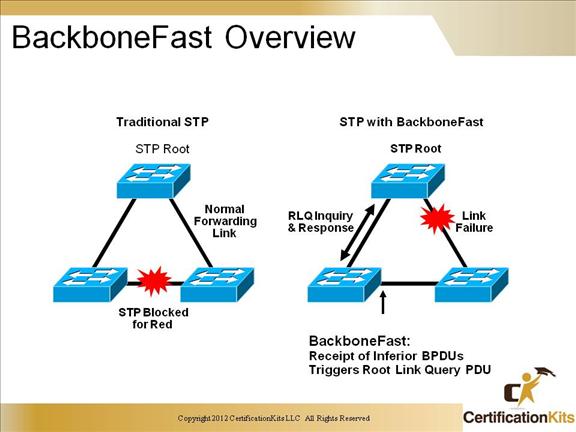
Backbone fast is configured on EVERY switch in the switching fabric. Backbone fast uses Root Link Queries (RLQ). Here is the scenario, a switches Root Port fails and it now thinks that it is the new Root Bridge. It promotes itself and starts sending BPDUs, but switches in the network do not recognize the switch as being the Root so they send a RLQ to the real root bridge to see if it is still alive. If the real Root Bridge answers, then the switch send a correction to the switch who lost his old Root Port and it now creates a new Root Port.
Cisco CCNP SWITCH Enabling and Verifying BackboneFast
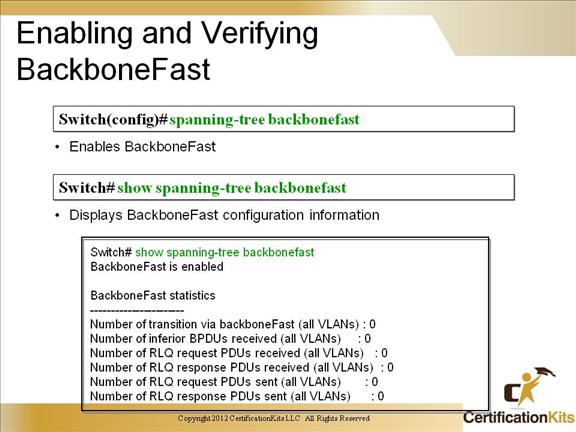
For BackboneFast to work, you must enable it on all switches in the network. BackboneFast is not supported on Token Ring VLANs.
Cisco CCNP SWITCH Protecting the Operation of STP
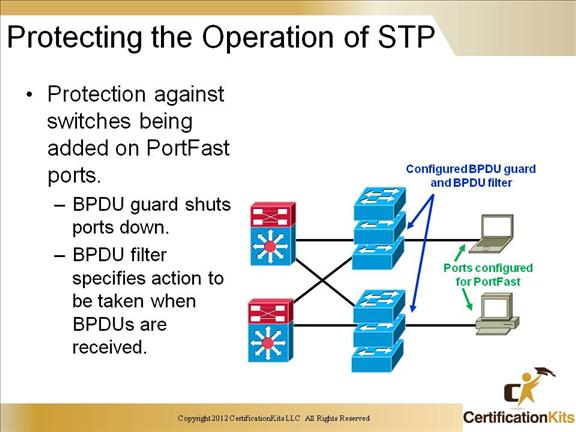
BPDU Guard
BPDU guard is used to protect the switched network from the problems that may be caused by the receipt of BPDUs on ports that should not be receiving them. The receipt of unexpected BPDUs may be accidental or may be part of an unauthorized attempt to add a switch to the network.
BPDU Filtering
PortFast BPDU filtering affects how the switch acknowledges BPDUs seen on PortFast-configured ports. Its functionality differs if it is configured globally or on a per-port basis. This difference will be explained elsewhere in this course.
BPDU Root Guard
BPDU root guard protects against a switch outside the designated network attempting to become the root bridge by blocking its access until the receipt of its BPDUs ceases.
Cisco CCNP SWITCH Unidirectional Link Failure
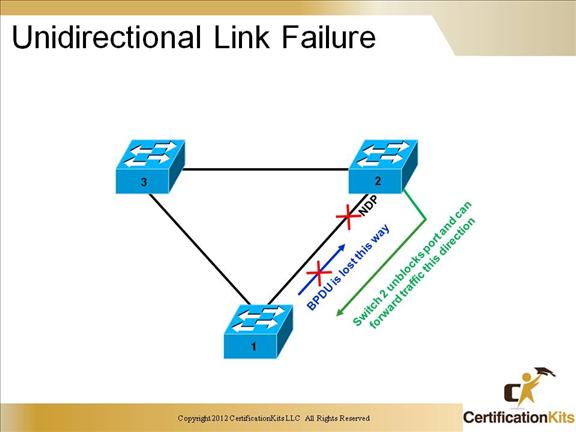
A unidirectional link occurs when traffic is transmitted between neighbors in one direction only. Unidirectional links can cause spanning tree topology loops. UDLD allows devices to detect when a unidirectional link exists and also to shut down the affected interface.
UDLD is a Layer 2 protocol that works with the Layer 1 mechanisms to determine the physical status of a link. If one fiber strand in a pair is disconnected, autonegotiation would not allow the link to become active or stay up. If both fiber strands are operant from a Layer 1 perspective, UDLD determines if traffic is flowing bidirectionally between the correct neighbors.
The switch periodically transmits UDLD packets on an interface with UDLD enabled. If the packets are not echoed back within a specific time frame, the link is flagged as unidirectional, and the interface is shut down. Devices on both ends of the link must support UDLD for the protocol to successfully identify and disable unidirectional links.
Cisco CCNP SWITCH With Loop Guard
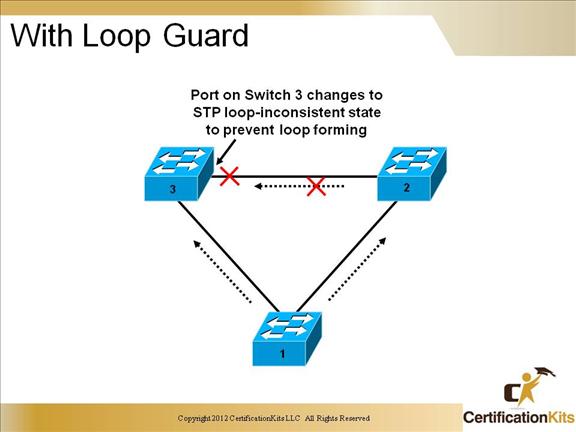
With loop guard enabled, the blocking port on switch 3 will transition into the STP loop-inconsistent state upon expiration of the max age timer. Because a port in the STP loop-inconsistent state will not pass user traffic, no loop is created. The loop-inconsistent state is effectively equal to the blocking state.
